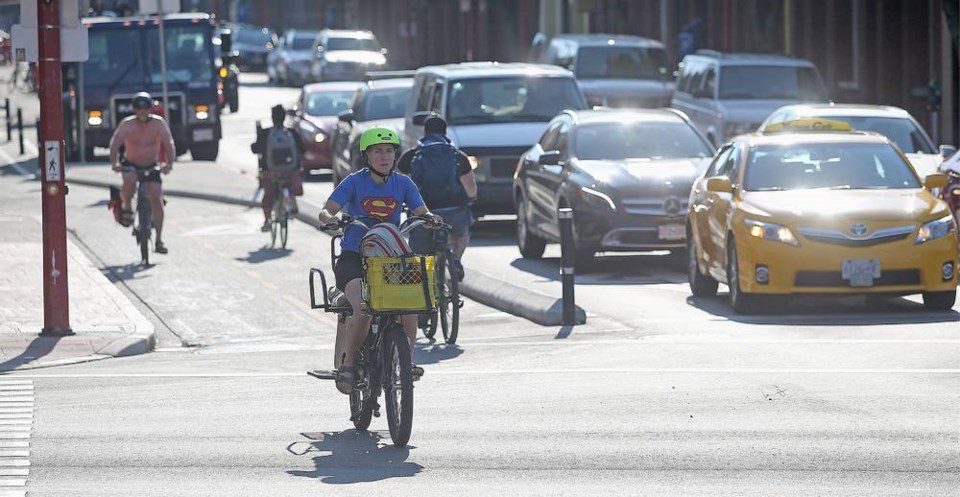Roxanne Egan-Elliott
Times Colonist
Road safety advocates are calling for better crash investigations that consider how changes to infrastructure can improve safety after a cyclist was struck by a car and killed Friday evening in Victoria.
Victoria police said a woman on a bike died after she was struck by a vehicle near the intersection of Gorge Road and Harriet Street shortly after 5:30 p.m.
This is the first death of a cyclist in the city since 2016, when 73-year-old Eileen Evans, a longtime cyclist, was killed on Government Street by a truck driver turning right.
Corey Burger, policy and infrastructure chair of the Greater Victoria Cycling Coalition, said Victoria is a relatively safe place to be on the roads compared to many North American cities, but “abysmal” by European standards.
He points to an idea out of Sweden called Vision Zero that aims to eliminate deaths and serious injuries on the road by shifting how we think about crashes, from an emphasis on individual responsibility — speed, impairment, wearing a helmet — to looking at all factors involved, including infrastructure.
“When we do crash investigations here in the province, our crash investigations focus on the people, sometimes on the vehicle, but never get into the roadway, or what engineering changes there might need to be made,” Burger said.
That kind of investigation falls slightly outside the mandate of police and the B.C. Coroners Service, he said, leaving a gap where important safety recommendations can be missed.
Burger is advocating for a single agency that would investigate a death or serious injury on the road involving any road user, and ask what needs to be done to prevent it from happening again. That requires looking at the roadway to determine how it can be made “more forgiving,” so if a similar scenario were to occur again, it wouldn’t result in someone’s death.
He noted there are investigative bodies dedicated to aviation, rail and workplace deaths that make recommendations to prevent future tragedies. He’d like to see something similar for road deaths, bringing together a panel of experts such as police, coroner, and civil engineers.
When Evans was killed in 2016, the cycling coalition requested the coroner’s report. Burger was disappointed that the report didn’t acknowledge that the roadway design contributed to her death, because the traffic lights at the intersection allowed vehicles turning right and cyclists riding straight through to go at the same time.
When a protected bike lane was installed on Pandora Avenue, the coalition successfully pushed for lights that separate right-turning vehicles from bikes travelling straight through intersections, allowing the groups to move at different times.
“There’s this whole facet, this whole gamut, of road safety improvements that can come. But the key part is we don’t even look at them when it comes to a crash and not in B.C. So there’s no recommendations that come out of that, because they don’t look at it in the first place,” Burger said.
Walk On Victoria, a pedestrian safety advocacy group, also wants to see movement toward achieving zero deaths on roads.
Amanda Macdonald, chairwoman of the group, said that starts with a shift in mentality to believe that deaths are preventable.
“Oslo and Helsinki, both European cities that have populations twice as great as Victoria, had zero pedestrian and cycling deaths in 2019, and it can be done,” she said.
There were 11 pedestrian deaths on Vancouver Island in the first 11 months of 2019, according to a coroners report. The Island has a population of about 870,000 compared to about 630,000 in both Oslo and Helsinki.
regan-elliott@timescolonist.com



